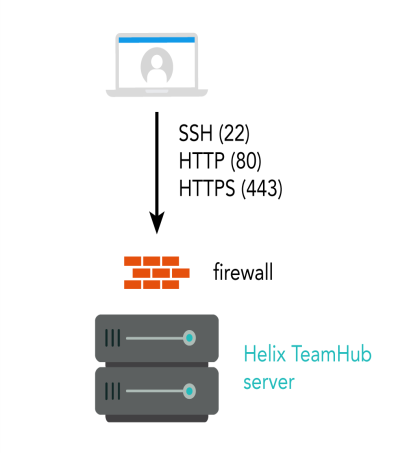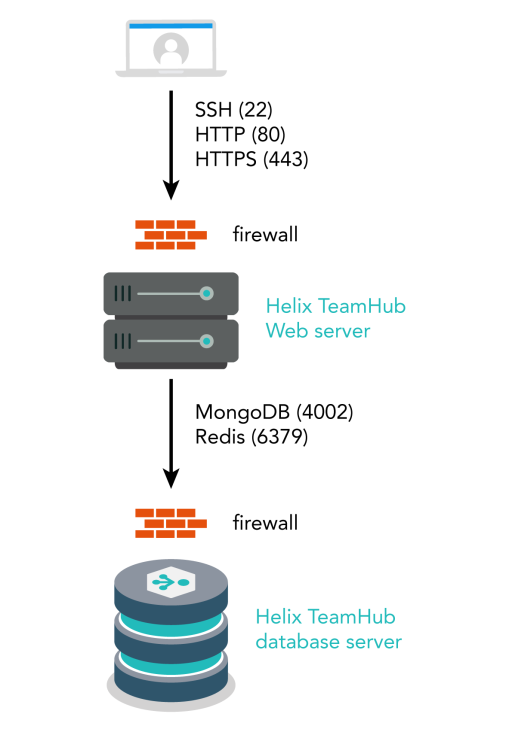Deployment types
Perforce TeamHub can be deployed in
The following information explains the major differences between the deployment types, depending on the installation environment.
Quick comparison
| Standard | Enterprise | HA (High Availability) | |
|---|---|---|---|
| Time to setup | Minutes | Hours | Days |
| Complexity | Low | Moderate | High |
| Servers | 1 | 2 | 5+ |
| Availability | Low | Moderate | High |
Standard
Standard deployment is the easiest to set up. It is quick to set up, it does not require the provisioning of multiple servers, and you do not need to worry about inter-server firewalls and advanced configuration. Standard deployment is suitable for bare metal servers, cloud computing instances, and local virtual machines.

The biggest drawbacks of Standard deployments are the downtime required during hardware failures and the effort needed if you ever want to migrate to a Enterprise deployment.
Bottom Line: Choose Standard deployment for the fastest setup, without a large up-front hardware or IT resources investment.
See Standard setup for details about using the Standard setup.
Enterprise
Enterprise deployment splits Perforce TeamHub into two roles:
-
The Perforce TeamHub application
-
The TeamHub DB (database)
Enterprise deployment needs at least two servers to operate because Perforce TeamHub Web connects to TeamHub DB. Enterprise deployments require tuning of the network firewall to allow inter-server communication. See firewall requirements.

Perforce TeamHub is delivered in two standalone packages: hth-web and hth-db. The major versions must be kept in sync. See Releases.
Enterprise deployments share similar drawbacks to Standard deployments. However, Enterprise deployments have the advantage of being future-proof for high availability and redundant clusters (see below). The physical separation of the server roles also increases security and eases maintenance.
Bottom line: Choose Enterprise deployment for a highly available and redundant Perforce TeamHub environment that is scalable without a large up-front investment.
See Enterprise setup for details about using the Enterprise setup.
High Availability
HA deployment is the most comprehensive and advanced deployment, but it requires a more significant up-front investment in hardware and IT resources. The benefits of HA deployments are on-demand scalability, zero-downtime maintenance, and maximum availability of Perforce TeamHub.
This type of deployment resembles the Enterprise deployment in terms of the packages and server roles, but it requires additional components and redundancy. For instance, SSL/TLS is offloaded by a hardware or software Load Balancer, which distributes the load to a number of Perforce TeamHub Web servers (we recommend at least 3), where each, in turn, uses a number of Perforce TeamHub Database servers. Additionally, the shared storage is utilized to have the same data across the cluster nodes.

Bottom line: Choose HA deployment for maximum availability of the Perforce TeamHub service and complete control over its capacity.